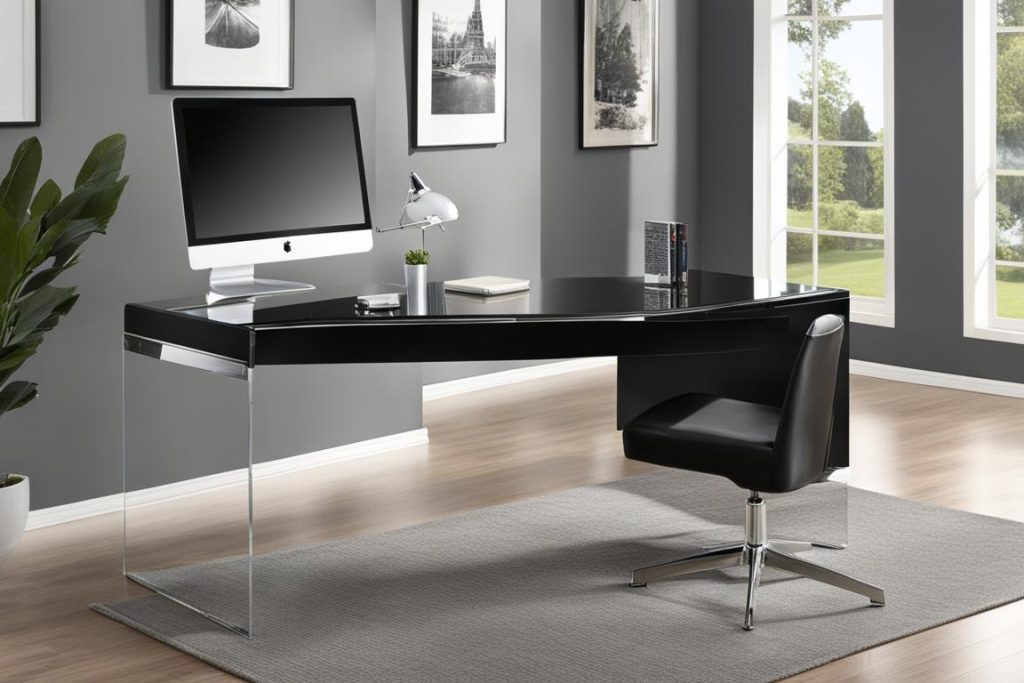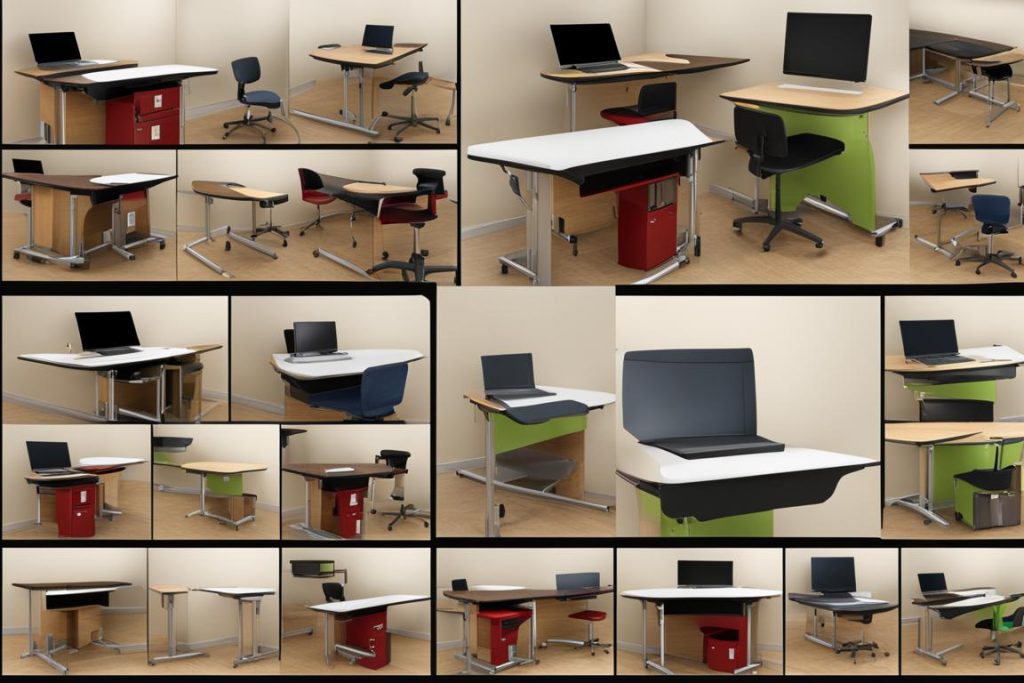Are you experiencing back pain while sitting at your desk? You’re not alone. Many people suffer from desk-related back pain, which can be caused by a variety of factors such as prolonged sitting, poor sitting posture, and lack of movement. Understanding the reasons behind your back pain and implementing simple solutions can help alleviate and prevent discomfort, allowing you to work comfortably and pain-free.
Why Does My Back Hurt Sitting at My Desk
- Desk-related back pain is common and can be caused by prolonged sitting and poor sitting posture.
- Taking regular breaks, practicing desk exercises, and maintaining proper sitting posture can help prevent and relieve back pain.
- An ergonomic desk setup, including an adjustable chair and proper screen and keyboard positioning, can provide additional support and comfort.
- When back pain flares up, applying heat and taking over-the-counter medication can provide temporary relief.
- If back pain persists or is accompanied by weakness or other symptoms, seek medical advice.
Tips to Prevent Back Pain from Sitting
To prevent back pain from sitting at a desk, it is essential to incorporate certain measures and practices into your daily routine. These tips can help alleviate discomfort and promote a healthier sitting posture:
- Take Regular Breaks: It’s important to give your body a break from prolonged sitting. Every hour, take a few minutes to stand up, stretch, and walk around. This helps relieve pressure on the back and promotes blood circulation.
- Switch Positions Every 15 Minutes: Sitting in the same position for an extended period can strain your back muscles. Make it a habit to change your sitting position every 15 minutes. You can lean forward slightly, lean back, or shift your weight from side to side.
- Engage in Desk Exercises: Incorporate desk exercises into your routine to keep your back muscles active and prevent stiffness. Simple stretches, such as neck rolls, shoulder shrugs, and seated back twists, can help relieve tension and promote flexibility. Regularly moving your arms, legs, and neck can also prevent muscle imbalances and reduce the risk of back pain.
- Consider Using a Standing Desk: Using a standing desk can offer relief from lower back pain. Standing periodically throughout the day takes the pressure off your spine and engages your leg muscles, promoting better circulation and reducing the strain on your back.
- Adjust Your Sitting Position: Make sure your sitting position is ergonomically correct. Bend your knees at a right angle and keep your feet flat on the floor or on a footrest. This helps alleviate pressure on your back. Additionally, remove any items from your pockets to avoid imbalances.
- Engage in Regular Physical Activity: A sedentary lifestyle can contribute to back pain. Engaging in regular physical activity outside of work, such as walking, jogging, or participating in exercise classes, can strengthen your back muscles and reduce the risk of pain.
By incorporating these tips into your daily routine, you can create a more ergonomic and supportive environment, reducing the likelihood of back pain while sitting at your desk.


Implementing these strategies can make a significant difference in your overall comfort and well-being during long hours at a desk. However, it’s important to note that if you already experience chronic or severe back pain, it’s advisable to consult a healthcare professional for personalized advice and treatment options.
Creating an Ergonomic Desk Setup
An ergonomic desk setup is essential for promoting comfort and preventing back pain. By making a few simple adjustments, you can create an environment that supports proper posture and reduces strain on your back and neck.


To begin, ensure that your computer screen is positioned at eye level. This will help you maintain a neutral neck position and prevent neck strain. If needed, use a monitor stand or adjust the height of your desk to achieve the correct positioning.
Investing in an ergonomic desk chair with good low back support is crucial for maintaining a healthy sitting posture. Look for a chair that can be adjusted to fit your body properly. The lumbar support should align with the natural curve of your lower back, providing stability and reducing the risk of discomfort. Additionally, adjust the armrests so that they support your arms comfortably and slightly lift your shoulders, promoting proper posture.
The keyboard should be positioned at a height where your elbows are bent at about 90 degrees. This helps maintain a neutral wrist position and prevents strain on the arms and shoulders. Consider using a keyboard tray or an adjustable desk to achieve the optimal height.
Lastly, when attending conference calls or making phone calls, use headphones or a Bluetooth headset to avoid straining your neck and shoulders by holding the phone between your ear and shoulder.
By creating an ergonomic desk setup, you can significantly reduce the risk of developing back pain and promote a healthy and comfortable workspace.
Relieving Back Pain When It Flares Up
When back pain flares up, there are several measures you can take to find relief and promote healing. Here are some tips to help alleviate back pain:
- Apply Heat: Applying a heating pad or using a hot water bottle can help relax tense muscles and reduce discomfort. The warmth improves blood flow to the affected area, promoting healing.
- Take Over-the-Counter Medication: Non-prescription pain relievers, such as acetaminophen or nonsteroidal anti-inflammatory drugs (NSAIDs), can help manage mild to moderate back pain. Always follow the instructions and consult a healthcare professional if needed.
- Take Regular Breaks: Taking short breaks throughout the day and getting up from your desk can help relieve tension in the back muscles. Use these breaks to stretch and move around.
- Do Desk Exercises: Incorporate gentle exercises into your work routine to relieve back pain. Some exercises you can try include:
- Seated Spine Twist: Sit upright and twist your upper body gently to the right, holding for a few seconds. Repeat on the left side.
- Shoulder Blade Squeeze: Sit with good posture and squeeze your shoulder blades together. Hold for a few seconds and release.
- Neck Stretches: Gently tilt your head to the left, bringing your left ear towards your shoulder, and hold for a few seconds. Repeat on the right side.
- Incorporate Stress Relief Activities: Stress can contribute to muscle tension and exacerbate back pain. Incorporate stress relief activities into your work routine, such as deep breathing exercises or taking a few moments to relax and unwind.
If your back pain persists, is accompanied by weakness in the legs, or is accompanied by other concerning symptoms, it is important to consult a healthcare provider for further evaluation and guidance.
Conclusion
Back pain from sitting at a desk is a common issue that many people face. However, there are several effective strategies to prevent and manage this desk-related back pain. By incorporating proper ergonomics, taking regular breaks, engaging in stretching exercises, and staying physically active, you can significantly reduce the risk of experiencing back pain from sitting.
Maintaining correct sitting posture is also crucial in alleviating back pain. Making adjustments to your workstation setup, such as positioning the computer screen at eye level, using an ergonomic chair with good low back support, and ensuring the keyboard and mouse are at the appropriate height, can help promote a healthier sitting posture.
By understanding the causes of back pain from sitting and implementing these preventive measures, you can create a more comfortable and productive workday. Remember to prioritize your health and well-being by taking regular breaks, practicing proper sitting posture, and incorporating physical activity into your daily routine. With these strategies in place, you can say goodbye to desk-related back pain and enjoy a healthier work environment.
FAQ
Why does my back hurt sitting at my desk?
Sitting for prolonged periods at a desk can lead to back pain due to lack of movement, stretching, and bending. Prolonged sitting increases the risk of developing lower back pain by 42%. Factors contributing to back pain from sitting include sitting in one position for too long, lack of proper low back support from the desk chair, and poor sitting posture.
How can I prevent back pain from sitting at my desk?
To prevent back pain, it is important to take regular breaks, switch positions every 15 minutes, and engage in desk exercises. Using a standing desk can also help reduce lower back pain. Adjusting the sitting position by bending the knees at a right angle, keeping feet flat on the floor or on a footrest, and removing items from pockets can alleviate pressure on the back. Engaging in regular physical activity outside of work can also reduce the risk of back pain.
What can I do to create an ergonomic desk setup?
An ergonomic desk setup can help alleviate and prevent back pain. The computer screen should be set at eye level to avoid straining the neck. Using an ergonomic chair with good low back support and adjusting the armrests to slightly lift the shoulders can also promote proper posture. The keyboard should be at a height where the elbows are bent at about 90 degrees. Headphones or a Bluetooth headset can be used for phone calls to avoid straining the neck and shoulders.
How can I relieve back pain when it flares up?
When back pain flares up, applying heat and taking over-the-counter medication can provide relief. Taking regular breaks, doing desk exercises, and incorporating stress relief activities into the work routine can also help relieve back pain. However, it is important to consult a healthcare provider if the pain persists, is associated with weakness in the legs, or is accompanied by other symptoms.
Any other tips for preventing and managing back pain from sitting at a desk?
Back pain from sitting at a desk is common and can be prevented and managed by incorporating proper ergonomics, regular breaks, stretching exercises, and physical activity. Maintaining correct sitting posture and adjusting the workstation setup can also help alleviate back pain. Understanding the causes of back pain from sitting and implementing strategies to prevent and relieve it can lead to a more comfortable and productive workday.






